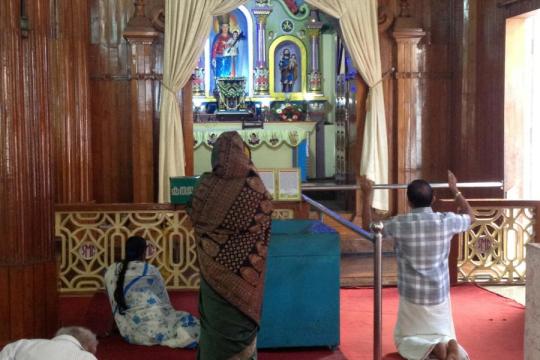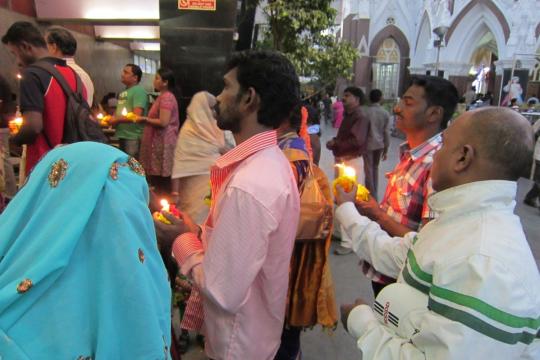The significance of caste in Catholic life and in Indian life is deeply contested. As with discussions of race in most places around the world, people of upper caste origins often report that caste is a matter of the past that only becomes significant when lower caste people make it so. In Northeast India, caste is not relevant at all. But in most of India, it is tremendously important. Those most affected by it can cite many examples that suggest it endures as a significant element of Indian culture. Looking back over four centuries, the anthropologist David Mosse goes so far as to claim, "More than anything, the relationship between Christianity and culture in South India has revolved around caste."1
A majority of Indian Latin rite Catholics are from the Dalit castes, the groups whose members were once considered irrevocably “untouchable." Portuguese missionaries were especially successful among low-caste fishermen along the coasts. Syro-Malabar and Syro-Malankara Catholics, however, often “regard themselves as the descendants of the high caste Nambudiri Brahman converts of Saint Thomas,” which puts them in a special place in the Indian caste system above Dalits.2
Those caste origins are undoubtedly reflected in the fact that Syrian Christians in Kerala tend to be better off than other Keralites in terms of education, land ownership, employment among men, employment status, and housing quality. Except in terms of women’s employment, Syrian Christians tend also to be better off than Latin Christians. 3
In 2008 in Eraiyur village, Tamil Nadu, "having been refused the honor of reading scripture, serving at the altar, or joining the choir in the parish church [and having] endured separate seating at Mass, separate funeral biers, and separate cemeteries" Dalit villagers demanded their own parish church and were physically attacked by upper-caste Catholics.4
In Vellankanni, near the great shrine, a Catholic cemetery is only open to families from four castes. Except among the upper and educated classes, marriages continue to be limited within certain castes.
Most observers say that there are many more Dalits who believe in Christianity, practice their faith regularly, and contribute to the churches, but who are not baptized because their conversion would be reported to the government and would legally mean the loss of the legal and job benefits available to scheduled castes. While many Indian Catholics expected that their status as Catholic Christians would free them from lower caste status, many have been deeply disappointed about the degree to which their subordinate status endures. At the same time, others have seen Christianity as a message of freedom that undermines any justifications for castism.
- 1David Mosse,"Christians in Village Society: Caste, Place, and the Ritualization of Power" in The Saint in the Banyan Tree: Christianity and Caste Society in India. (Berkeley: University of California, 2012), 96-132.
- 2Rowena, Robinson, "Journeying through the Social Worlds of Conversion," in Christians of India. (New Delhi: Sage Publications, 2003), 39-40.
- 3Note that the data on Syrian Christians includes all Syrian Christians, not only Catholic ones. K. C. Zachariah, Syrian Christians of Kerala: Demographic and Socio-Economic Transition in the Twentieth Century, (Hyderabad, India: Orient Longman Private Limited, 2006), 26-30.
- 4David Mosse, "Introduction," in The Saint in the Banyan Tree: Christianity and Caste Society in India. (Berkeley: University of California, 2012), 1-30. See also Sunil Raman, "Bigotry Alive for Christian Dalits." BBC NEWS. BBC, last updated June 12, 2009, http://news.bbc.co.uk/2/hi/south_asia/8090009.stm.


